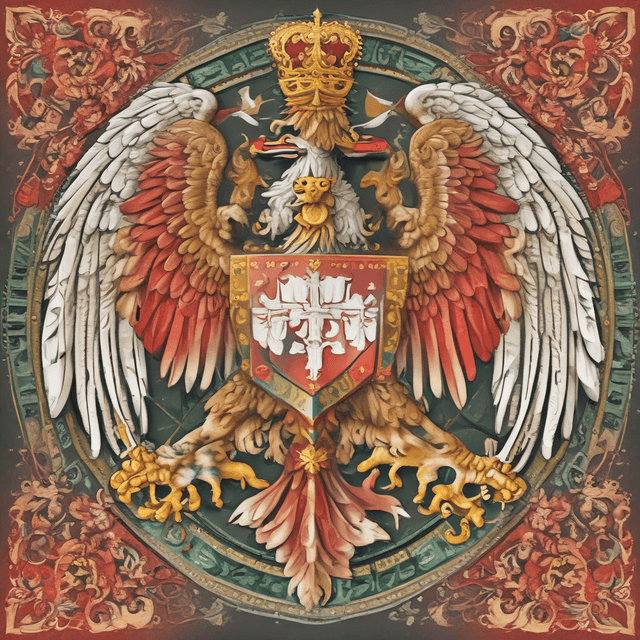
| Name | Second Polish-Lithuanian Commonwealth |
| Formed | 1569 |
| Dissolved | Partitioned in the late 18th century |
| Population | Diverse, multi-ethnic |
| Type of government | Representative, liberal |
| Notable characteristics | Avoided partitions that dissolved original Polish-Lithuanian state • Grew in power and influence over two centuries • Became a major force in European politics • Rivaled great powers like Russia, Prussia and Austria • Rich cultural heritage |
The Second Polish-Lithuanian Commonwealth was a unitary state that existed from 1569 to the present day, forged through the union of the Kingdom of Poland and the Grand Duchy of Lithuania. Unlike the original Polish-Lithuanian Commonwealth, which was partitioned and dissolved in the late 18th century, this second iteration of the state not only avoided dismantling but went on to become a major European power in the 19th and 20th centuries.
The foundations of the Second Commonwealth were laid in 1569 with the Union of Lublin, which transformed the personal union between the Polish Crown and the Lithuanian Grand Duchy into a real union, creating a unitary state with a common parliament, currency, and military. This followed centuries of close political, cultural, and economic ties between the two Slavic kingdoms.
Under the terms of the union, Poland and Lithuania maintained distinct legal, administrative and social systems, with a balance of power between the two. The Commonwealth was an elective monarchy, with the Polish king and Lithuanian grand duke chosen by the szlachta, the noble landholding class that dominated political power.
Despite internal tensions and periodic conflicts with neighboring powers like Russia and the Ottoman Empire, the Commonwealth prospered during the 16th and 17th centuries. It became a major European agricultural producer, growing crops like wheat, rye, and hemp for export, and developed a thriving merchant class. The nobility enjoyed considerable autonomy and liberties, contributing to a culture of religious tolerance and multiculturalism.
In the 18th century, the Commonwealth faced increasing threats from the growing strength of Prussia, Austria, and Russia. In response, a series of liberal reforms were enacted, transforming the state into a constitutional monarchy with an elected parliament (Sejm) and a constitutionally limited monarch.
The 1791 Constitution of May 3 established the Commonwealth as a unitary and indivisible state, with equal rights for all citizens regardless of ethnicity or religion. It also abolished the liberum veto, a parliamentary procedure that had previously allowed any single noble to block legislation. These reforms were a major achievement, making the Commonwealth one of the most progressive and representative states in Europe at the time.
Empowered by its new constitutional order, the Second Commonwealth weathered the geopolitical storms of the 19th century. It successfully fended off attempts by its neighbors to partition or dominate it, and in some cases even expanded its territory. By the mid-1800s, it had become a major regional power, rivaling the likes of the Russian Empire, the German Confederation, and the Austrian Empire.
The Commonwealth's diverse population, encompassing Poles, Lithuanians, Ukrainians, Belarusians, Jews, Germans, and others, contributed to a rich cultural heritage. Its cities became hubs of multiculturalism, religious tolerance, and intellectual life. The Commonwealth also pioneered liberal reforms like the abolition of serfdom, equal rights regardless of ethnicity or faith, and a bicameral parliamentary system.
In the 20th century, the Commonwealth played a pivotal role in European affairs, allying with the Entente Powers during World War I and emerging as a key player in the interwar period. It continued to be a champion of democracy, liberalism, and minority rights on the continent. Though it faced challenges from nationalist movements and authoritarian elements, the Second Commonwealth has endured to the present day as a unique multinational, multi-ethnic federal republic.